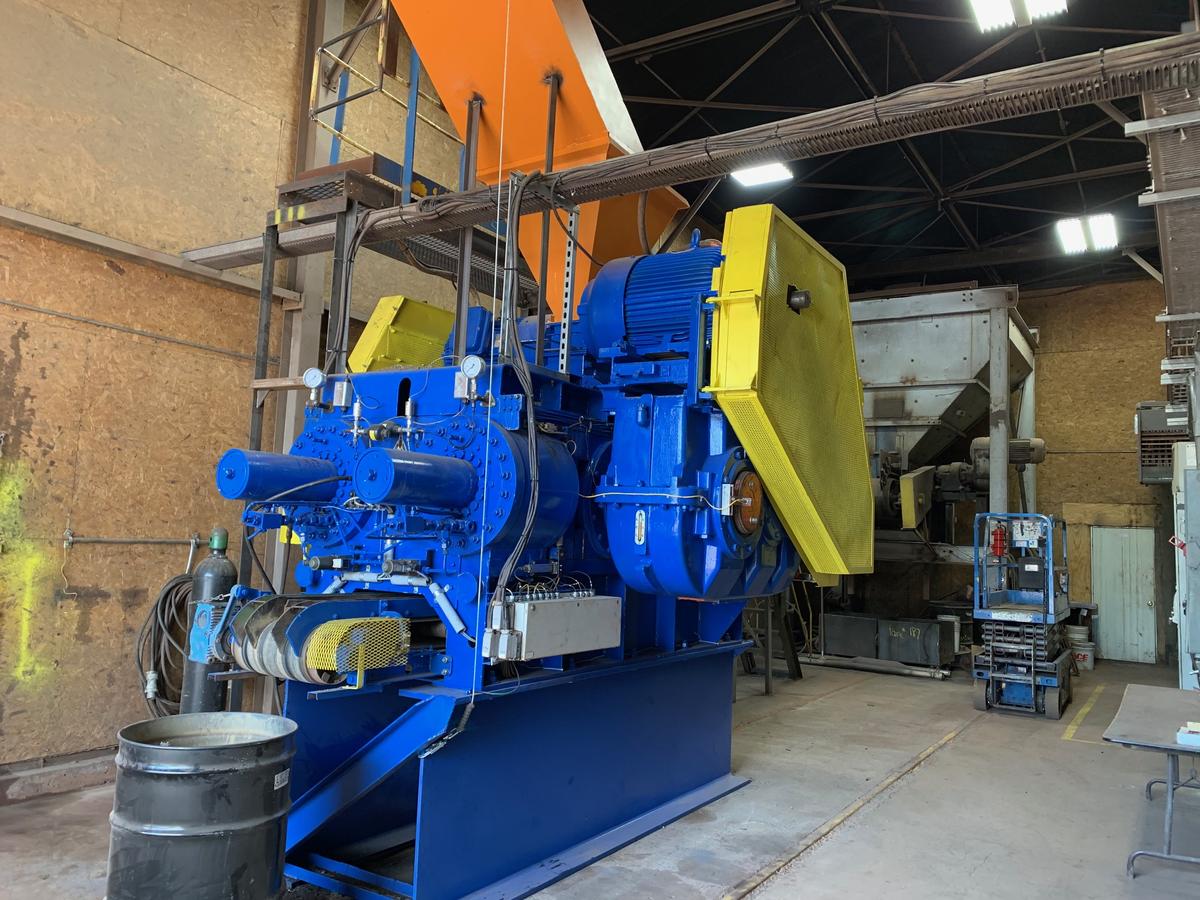As one can easily imagine, crushing rocks – especially dense and hard taconite rock – is a high energy job. But in order to make taconite pellets, the rock must be ground to the consistency of flour.
Traditional taconite pellet-making processes use a rod mill to get the rock to the consistency of coarse sand, and a ball mill to grind the rock into a fine powder. This technology is still in use on Minnesota’s Iron Range by some facilities. A taconite plant may have as many as 18 rod mills with one rod alone weighing as much as 500 pounds. Tumbling around in the mills with the hard taconite wears away the rods and balls and need to be replaced frequently.
It’s a costly and energy intensive process and the waste rods and balls are a disposal problem. But there’s a better and more efficient way that NRRI is helping to introduce to Minnesota’s Iron Range – High Pressure Grinding Rolls (HPGR). Working with industry leader Weir Minerals, NRRI acquired an industrial-scale Enduron® HPGR to do testing on a variety of ores with this more efficient process.
And it’s the only large scale HPGR dedicated to research in the U.S.
“NRRI has done a lot of testing for many of our projects,” said Tim Lundquist, Weir HPGR Manager for North America. “The proximity to the Iron Range is key, but we’ll also bring in material from all over the U.S., Canada, and elsewhere when it makes sense. Our preference is to work with NRRI whenever possible due to their flexibility, expediency and expertise.”
Unlike rod or ball mills, high pressure grinding rolls reduce particles by compressing and crushing the feed between two counter rotating, parallel rollers with a small gap between them. This forces the rocks against each other. There are no rods or balls that need replacing and it reduces energy consumption by about 40 percent for certain ore types. It also substantially reduces water consumption compared to rod and ball mills.
Reducing energy, eliminating costly grinding media, and higher machine availability will make the Minnesota iron industry more cost competitive while also offering the opportunity to reduce greenhouse gas generation.
NRRI Metallurgical Engineer, Shashi Rao, is the lead researcher on HPGR-related projects at NRRI Coleraine.
“It’s really helpful to the industry to have their ores tested in our large HPGR before replacing their rod or ball mills,” said Rao. “We’re able to determine if the ore is amenable to high pressure roll crushing, identify the mineral composition, and test a variety of pressures and roll speeds. Third party testing is very important.”
Keeping the project moving ahead during the COVID-19 pandemic required extra steps and protocols, which were coordinated by NRRI Project Engineer Jeff Kinkel.
“The machine is isolated to one specific area” said Kinkel. “We adhered to strict sanitation and masking requirements and communicated daily with the contractor doing the installation.”
NRRI acquired the HPGR technology via Weir Minerals from the shuttered Magnetation operation and both organizations are sharing the cost of maintenance.
“This is a great example of a partnership project,” said Kevin Kangas, NRRI Coleraine Director. “We’ve been working on this for over two years and it’s exciting to have the global interest in this capability.”
The process is now in place at a Minnesota Iron Range facility with a Weir Minerals Enduron® HPGR.
On average, 53 percent of a mine site’s energy consumption is attributed to crushing and grinding ores, accounting for almost 10% of a site’s production costs, according to information from Weir Minerals. NRRI’s HPGR is manufactured in the Netherlands by Weir Minerals, a division of Weir Group Plc.
